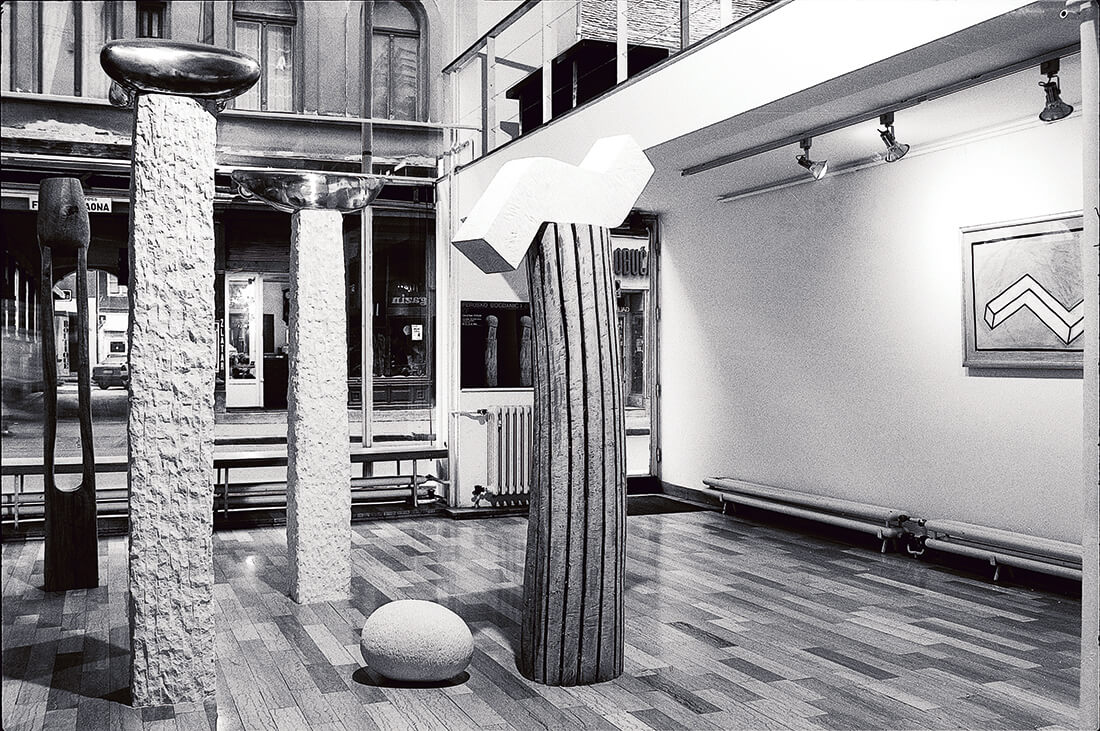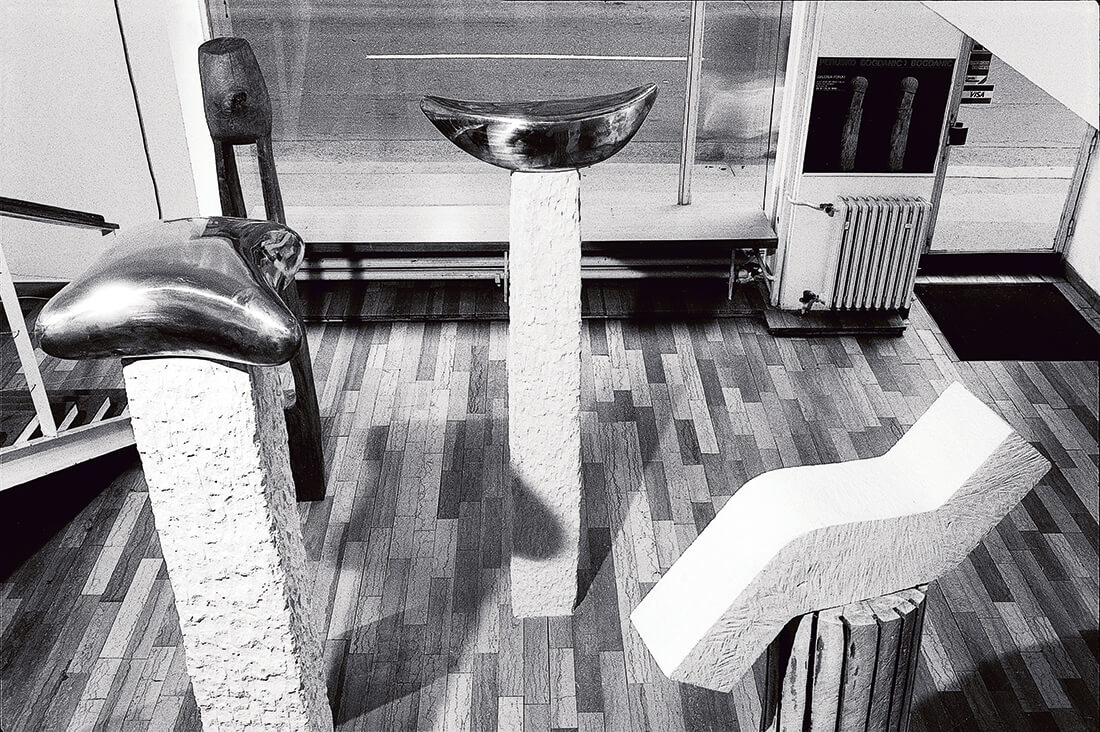
The foreword from the exhibition catalogue Forum Gallery, 1990
Presence - Zvonko Maković
The sculpture produced on the threshold of the 1980s may be described as characterized by a specific attitude of the artist to his materials. The materials thus often speak for themselves, stressing their raw, material facts, which by a simple gesture turn into particles of plastic language. Recording physical attributes meant emphasizing the artistic act as a natural, physical experience. The work became non-metaphoric, and self-reflection played an essential role. The examination of fundamental, material facts turned into a critical artistic act. The work object has its autonomy, its laws which govern it regardless of the artist’s intervention. The awareness of the distance between the artist and the work resulted in a brief speech: there are no metaphors that would provide the work with the redundancy of meaning. The sculpture, as well as art in general, of the 1980s, becomes a complex thing emanating vague purposes. There is no longer a dense and monolithic membrane that reduces the work of art to its physical existence. The material from which the work is made does not conceal codes that would allow us to reach the real meaning.
There is, therefore, an apparent difference between the sculpture created in the 1970s and the 1980s. The former emphasized the physical materiality of the project, and the sculpture was a thing that existed or a concept that existed. In the 1980s, it was more an illusion of existence, as a solidity was never defined. Sculpture becomes a form of an embodied feeling. The objects from the earlier decade could be decayed and corroded, yet despite their ephemeral quality, they still had tangibility, density, and presence in the physical space. The sculpture of the 1980s, in turn, relies on the same esoteric quality that the Nuova Immagine painting aims at. It is therefore not surprising that many painters of the generation maturing in the early 1980s ventured into sculpture-Baselitz, Schmalix, Immendorf, Anzinger, Chia, Cucchi, Paladino…-and, conversely, that many sculptors turned to paint to express themselves completely. Sculpture created at that time is perhaps best defined by the painter Sandro Chia who said: Sculpture seems to be floating between heaven and earth; it is an illusion of might…
The sculptor Peruško Bogdanić won full recognition on the threshold of the 1980s. His painstakingly thought-through forms could be described as an “organic minimalism” where the feeling for pure and straightforward vitality blends with an intuitively found order, proportions and balance. Archetypal figures which seem to come from ancient civilizations or free erotic fancy paradoxically affirm the presence of a hidden and deliberately vague figure. The volume is highly compressed, and the spatial restrictions are transcended by a sudden rhythm shift, a pretended artistry mistake, and a slight deviation from harmonious proportions. Such ambivalent features of the volume make the sculptures appear temporary, uncertain, open-an illusion. More precisely, significance is given to the ambiguous.
While Bogdanic’s works from the early 1980s strove for a precise formulation and pure form, this aspect of his sculpture has today become secondary. The emphasis is on the immediacy of feeling and the artist’s presence in work. The sculptures occasionally recall ritual objects harking back to prehistoric play. This dimension of mythical (or pseudo-mythical), ritual (or pseudo-ritual) is profoundly evocative and rich in references. The invocation of mythologies obscured by the mist of the past provides the works with a romantic and nostalgic aura and expands their meaning.
Almost simultaneously with the ideas for Bogdanić’s new sculptures, a cycle of large-format paintings came into being-Don Juan or Love of Geometry. The paintings may seem to contradict the sculptures imbued with an apparent vitality. But if the images are carefully studied, their reduced shapes and extremely condensed colours reveal the same impulse at work as in the sculptures, which testifies to the immediacy of feeling and the artist’s presence. These paintings’ geometric and geometric forms result from a clearly visible painting process, condensing, deliberating, and a sense of duality.
The artist does not bury his handwriting in the deep, invisible layers of the painting: he leaves it in sight, just as he does in his wood or stone sculptures (Hektorović, Venexiana, Vergil’s Candle). The constantly pulsating planes of the statues and the pulsating surface of the paintings stress spontaneity, a state as “natural as breathing”.
If Bogdanić’s early works could be described as “organic minimalism”, his paintings from the cycle Don Juan or Love of Geometry might be called “organic geometry”. The geometry-related forms are borne of the same process responsible for the sculptures- a sophisticated reduction, never done merely for reduction’s sake. Instead, in both the sculptures and paintings, the removal is an inherent necessity, and paintings should be understood as a continuation of the same charge that the artist expresses in his sculptures. They are working in different media result of Bogdanić’s need to express himself as fully as possible, to render each desire and feeling as material and present. In this respect, he belongs to the generation of artists coming into their own in the 1980s.


